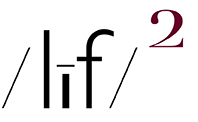all photos (embiggenable)
“I bought that thing as a toy, and I took it as a kind of a challenge. It was this gadget and I decided that I might be able to something serious with it.” ~ Walker Evans
I COULD CREATE A BOOK TITLED My Life With Polaroid. The book would a voluminous thing inasmuch as it would contain at least 200 photographs culled from the thousands of Polaroid photographs–straight out of the camera, manipulated images, image transfer images–that I have made over the years.
Like Evans, I initially purchased a SX70 camera as a “toy” but soon realized that I could create some “serious” work with it. Work, that at the time, was a kinda a darling of the photography Fine Art World. I also did quite a number of “serious” consumer magazines and advertising assignments with the SX70–most notably, a 24 hour, day-in-the-life of Pittsburgh assignment.
“Serious” work aside, the camera was a constant instigator / temptation for just screwing around and making pictures with it. So much so that I was very surprised when the Polaroid company announced that it was closing the doors cuz I thought that my continuing, voluminous purchases of TIME ZERO print film was enough to keep them in business.
Re: Walker Evans and Polaroid: very late in his life Walker was alone (recently divorced), tired, in poor health, recovering from near-fatal stomach surgery. He was being supported by a few neighbors and a few of his Yale University students. While visiting a dentist–a friend and a collector–who was working on his teeth, the dentist/friend spurred Walker to acquire an easy-to-use camera, an Polaroid SX-70. Between September 1973 > November 1975, Walker made over 2,600 photographs with the SX-70. He was aided and abetted in that endeavor by the Polaroid Corporation which supplied him with all of TIME ZERO film he desired.
All of that written, this entry was inspired by an Academic Lunatic Fringe website that is featuring POLAROID WEEK. The displayed work is very typical narcissistic navel gazing ALF bovine droppings stuff that reveals not a thing about the genre’s spontaneous, instant, and joyful picture making heart and soul. Be that as it may, that ALF flapoodle-and-green-paint junk did cause me to revisit some of my Polaroid work which reminded me how much I miss that era in my picture making life.
In revisiting my Polaroid work, I decided to make this entry and include a couple book recommendations, re: Polaroid Photography. In researching sources where the 2 books could be purchased, I discovered 2 things ….
…. the first recommendation, THE POLAROID BOOK–253 photographs by 203 photographers, culled from The Polaroid Collection of fine art photography–is a available at quite a number of sites for $20-30USD. It is beautifully printed and filled to the brim with stunningly good work created with all manner of Polaroid materials-including TIME ZERO, 4x5/8x10 instant sheet film (BW and color), and the infamous 20x24 inch Polaroid camera.
…. the second recommendation, Walker Evans ~ POLAROIDS is out of print but can be had on the used market for between $300>700USD (depending on condition). ASIDE: I purchased my copy years ago while still in print for $50USD. END ASIDE. The book is beautifully printed and all of the photographs are presented in their original size, one per page.
FYI #1, there has been a Polaroid-esque revival of late. A variety of cameras, to include the legendary SX-70 are available, as well as print film for all. None of this resurgence involves the defunct Polaroid Corporation but the gear and films have reach near-Polaroid specs and quality. So, instead of buying a book about Polaroid photography, maybe acquiring a Polaroid-esque camera and film would be a better introduction to the instant picture world.
FYI #2, the cemetery picture above is of a the casket of a very good friend. After the grave-side ceremony, as I was leaving the site, I glanced back just as a sunlight highlight burst forth on the casket. It was one of those weird / cosmic / hair-on-the-back-of-my-neck-standing-up experiences …. almost as if she was giving me a goodbye wink.


